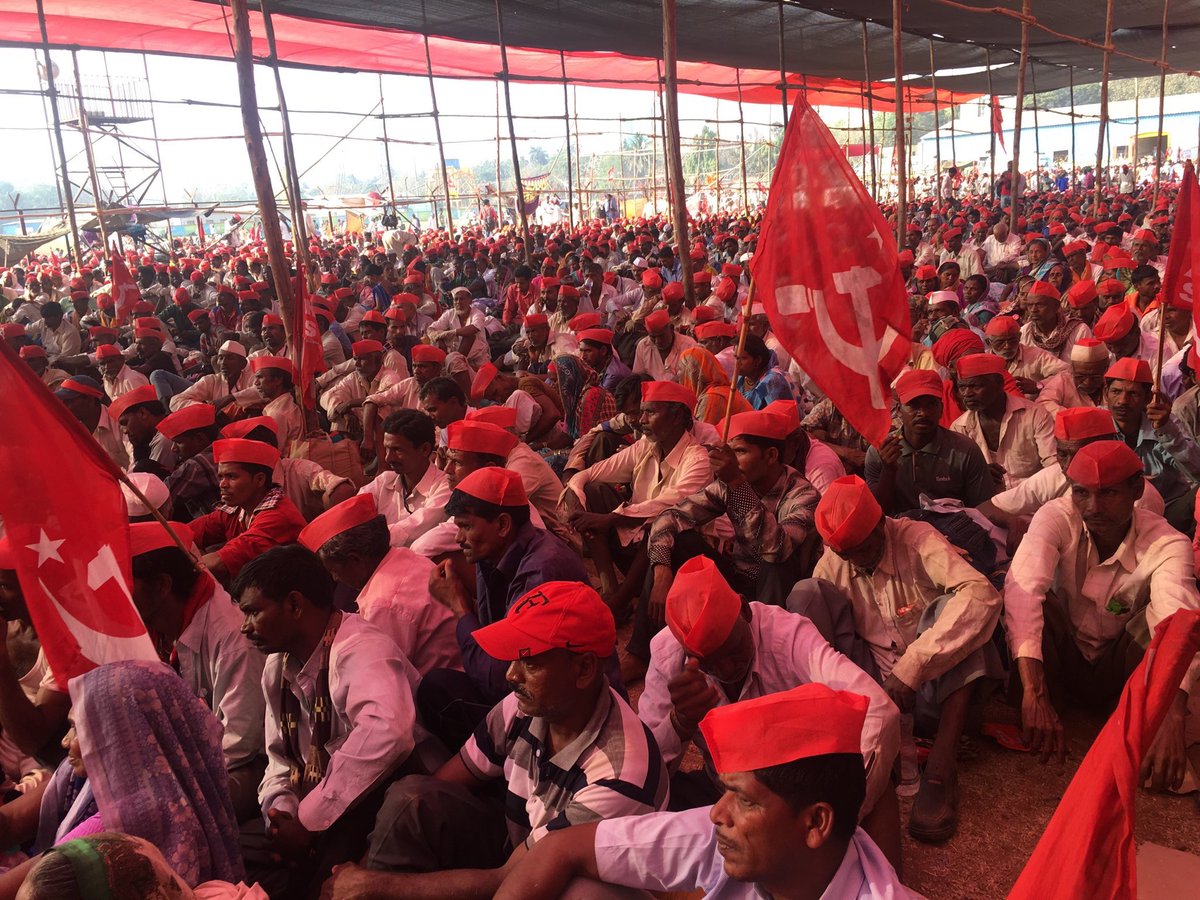Maharashtra farmers emerge victorious
March 13, 2018 | Expert Insights

Over 30,000 farmers marched to Mumbai on Sunday, protesting for land rights and monetary assistance. On Monday evening, the government acquiesced to a number of their demands. The movement was unique in its undisruptive nature and success at garnering support. Farmers in India face a number of issues including low agricultural productivity and heavy debt.
Background
India’s modern history of agricultural movements began in the 1970s. Commonly called the “new farmers movements”, these movements involved widespread protests and the formation of farmers’ organisations. The key aim of these protests was to modify the state’s intervention in the agrarian economy. Common demands included lowering costs for inputs (such as seeds, fertilisers, water, and electricity), and higher selling prices.
A number of farmers in India are burdened with debt and high crop uncertainty. According to the AIKS, 4 lakh (400 thousand) farmers have committed suicide since 1995. Of these, approximately 19% (76,000) were from the state of Maharashtra. Studies have linked these suicides to high indebtedness and a reliance on informal sources of credit. Crop failure, drought and other weather conditions, increasing costs of production, and familial concerns are other factors linked to agrarian distress.
The Swaminathan Commission Report was a product of the National Commission on Farmers (NCF) formed in 2005, intended to address farmer suicides in India. The report concluded that the major causes of the agrarian crisis in India are: poor land reforms, lack of agricultural infrastructure and technology, access to water, “access, adequacy and timeliness” of credit, weather conditions, and the marketability of agrarian goods. The report made a number of recommendations towards food security, agricultural productivity, and ecological sustainability.
The All India Kisan Sabha (AIKS) or the All India Peasants Union, is the farmer’s division of the CPI-M (Communist Party of India- Marxist). The organisation is derived from the Kisan Sabha movement started by Sahajanand Saraswati in Bihar in 1936. It works for farmers’ rights and the anti-feudal movement in India.
Analysis
30,000 farmers marched into Mumbai late on Sunday night. The group had walked for 6 days from Nashik district, almost 200 kilometres away. The farmers, largely poor tribal (Adivasi) cultivators, marched under a sea of red banners of the CPI(M)-allied AIKS. The intention was to protest the state’s agricultural policies.
Both the protest and the support it received was almost unprecedented. The massive group scheduled its arrival in the metropolitan city for the early hours of Monday morning, to minimise disruption. All major opposition parties, as well as the BJP-allied Shiv Sena, expressed support for the large congregation and their peaceful march. This included Anna Hazare’s Aam Admi Party, Rashtriya Dal Lok Vice President Jayant Chowdhury, and former union agriculture minister Sharad Pawar. Congress leader Rahul Gandhi also took to twitter to express his support.
As the farmers assembled in Mumbai’s Azad Maidan early Monday morning, a number of the city’s residents rallied around them, providing food and water. This included Mumbai’s renowned “dabbawalas”. Some citizens took up calls to donate footwear to the protestors.
The Long Kisan March drew the attention of state officials, who scheduled a meeting with leaders on Monday afternoon. By Monday evening, BJP leaders announced that a number of the farmers’ demands would be met. “We have agreed to all of their demands and have given them an assurance in writing to resolve them in six months,” Maharashtra Chief Minister Devendra Fadnavis said.
The state agreed to provide compensation and financial assistance for failed crops last month. It will implement a loan waiver promised last year, and widen the range of farmers who come under the policy’s ambit. Additionally, the state agreed to implement a number of recommendations from the Swaminathan Commission report, which suggests higher compensation for land acquisition.
Maharashtra Chief Secretary Sumit Mallick acknowledged Adivasi demands to recognise land ownership rights. “We have agreed to at least seven demands on the spot. These are landless tribals and the most important demands were related to land ownership, which we have agreed to resolve at the earliest,” Mallick said.
On Monday, the General Secretary of CPI-M said that farmers had the power to “uproot governments at the Centre and in Maharashtra”. “Any party which ignores the cause of farmers will not survive,” he warned.
Assessment
Our assessment is that this is a victory for the nation. Farmers are the heart of India; they provide the nation with food security. We believe that the Long Kisan March is representative of a unique movement that raised awareness regarding the plight of farmers in the nation. We also believe that this protest may indicate that the “red” CPM party, popular in areas such as Tripura and Kerala, may be seeing increasing support in central India.
Read more: Maharashtra’s farmers protest








Comments